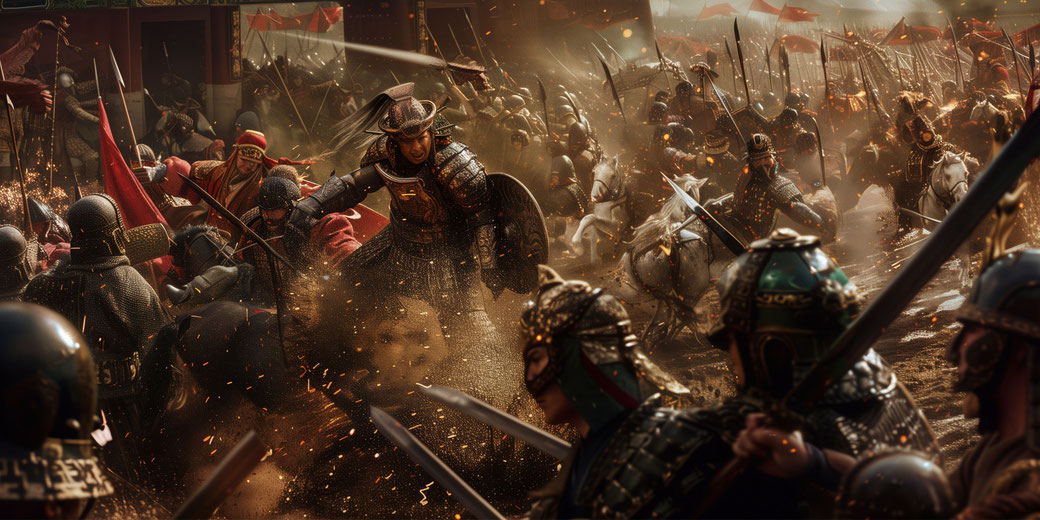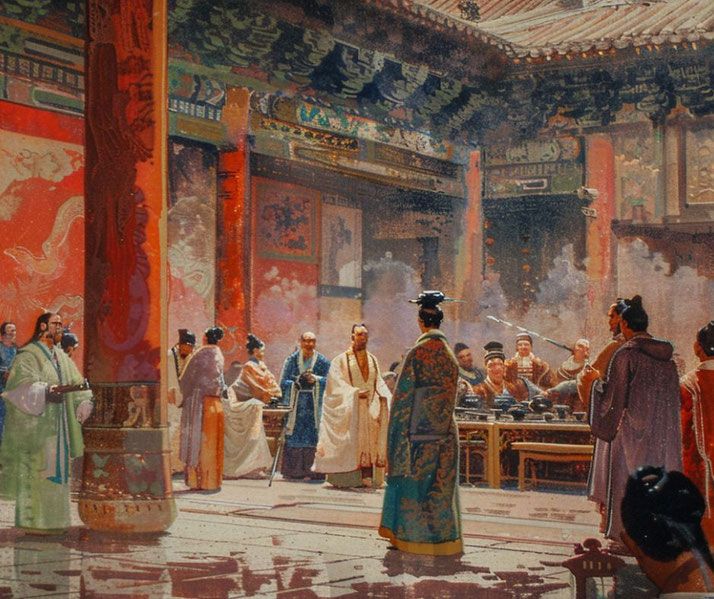Why the brutal Battle of Red Cliffs doomed an ancient Chinese dynasty

In the winter of AD 208, along the banks of the Yangtze River, the fate of an empire hung in the balance as a critical confrontation unfolded that would significantly determine the course of Chinese history.
It pitted the powerful northern warlord Cao Cao against an alliance of southern leaders.
As a result of this conflict, the Han Dynasty's breakup sped up, leading to the start of the dramatic Three Kingdoms period.
A clash of titans: The key leaders
In the early third century AD, the late Eastern Han Dynasty of China was fighting uncontrolled political corruption and violent civil unrest.
The ruling Han Dynasty neared collapse. In response, powerful warlords across the empire took advantage of the weakening central authority of the emperor to expand their own military influence.
One of these was known as Cao Cao and he had successfully unified much of northern China under his control by 208 AD.
In fact, his army was so large and had a strong reputation for its discipline that it was rumoured to be unstoppable.
However, there was still an emperor who supposed to be ruling over China, by the name of Xian. But in reality, he was controlled by Cao Cao.
The warlord had claimed that his ever increaseing miliary control was being fought to unify the empire in the name of Xian and the Han Dynasty.
However, the southern regions of the Yangtze River had broken away from the empire and were under the control of two other warlords.
One was Sun Quan, the young but capable ruler of the Eastern Wu. He controlled the lower Yangtze regions.
According to reports, he was politically savvy and had a keen understanding of naval warfare.
Alongside him was Liu Bei, who was a distant relative of the Han imperial family.
He led a smaller but strongly devoted group of followers. Given these circumstances, neither leader could hope to stand against Cao Cao’s power alone.
So, they formed an uneasy alliance: together they at least stood a fighting chance.
Word reached them that Cao Cao was on the march south to face them. So, they began preparing their defenses.

The growing tensions before the battle
In the months leading up to the Battle of Red Cliffs, in the winter of AD 208, the political situation of China was in a state of change.
Cao Cao had indeed turned his attention south with the goal to eliminate the new coalition under Sun Quan and Liu Bei.
Cao Cao had reason to feel confident in his superior numbers, which numbered over 200,000 troops.
This massive force, however, was not as strong as the numbers suggested; it included many newly conscripted soldiers and non-combatant forced labourers.
Liu Bei marched out to intercept Cao Cao, but suffering a defeat at the Battle of Changban.
Following this, he rushed south to regrouped and reinforced his alliance with Sun Quan.
Now, the two leaders chose to reinforce their positions along the Yangtze River.
They could gather only about 50,000 men, but Zhou Yu, the chief military commander for Sun Quan, and Zhuge Liang, Liu Bei's chief strategist, recognised the strategic value of holding the Yangtze River as a natural barrier against Cao Cao’s advancing force.
In the brief time available, the allied southern forces focus on improving their naval capabilities.
Their skill in river combat could potentially counter the numerical advantage of Cao Cao's army.
What happened at the Battle of Red Cliffs?
Even though the clash is known as the Battle of Red Cliffs, scholars still debate its exact location.
For example, some point to Jiayu in Hubei Province, while others favour Chibi near Wuhan. Both sites lie along the middle reaches of the Yangtze.
Regardless of the exact location, we are told that when Cao Cao’s reached the river, he looked for the best way to cross the water to engage the enemy.
Even though his army outnumbered his opponents, his troops were not used to the southern climate and lacked training for fighting on water.
They started building wooden rafts and boats to make the crossing.
However, Zhou Yu and Zhuge Liang had developed a clever plan to target these weaknesses.
Specifically, they decided to send ‘fire ships’ against Cao Cao’s own fleet.
To execute this, they took advantage of the Yangtze’s winter winds to help push the unmanned vessels into the northern camp, as they approached, they were ignited.
The flaming ships quickly caused chaos among Cao Cao’s fleet. Many soldiers jumped overboard and drowned in the confusion.
The troops of the southern alliance took advantage of the disorder in the northern ranks and attacked from both water and land.
The southern ships that transported them were smaller and more agile than the northern ones, but they better suited the fast-moving currents that wound through the Yangtze.
This allowed the southern forces to carry out coordinated moves and attack together effectively, even in difficult conditions.
Meanwhile, on the riverbank, Cao Cao’s soldiers felt discouraged and weak and struggled to put up a strong defence.
As a result, Sun Quan and Liu Bei quickly defeated the remaining troops.
Cao Cao saw no hope and ordered a retreat.

The dramatic significance of the Battle of Red Cliffs
The battle ended in a severe loss for Cao Cao. Reasonable estimates suggest he lost at least half his army, along with many of supplies.
What made things worse is that fact that disease also struck his troops in the humid river basin.
As a result, Cao Cao fled north to his base in the Central Plains, leaving thousands of his men captured or killed.
His advance south was cancelled indefiniately. That mean that Sun Quan and Liu Bei kept control of the south where they established the kingdoms of Wu and Shu.
Sadly, this also meant that China remained divided into three rival states.
Later, in AD 213, Emperor Xian of the Eastern Han dynasty gave Cao Cao the title Duke of Wei and ten cities to rule.
Subsequently, after Cao Cao died in AD 220, his son Cao Pi forced the emperor to step down and created his own kingdom of Wei.
This division of China into three warring states lasted for decades.
What do you need help with?
Download ready-to-use digital learning resources
Copyright © History Skills 2014-2025.
Contact via email
With the exception of links to external sites, some historical sources and extracts from specific publications, all content on this website is copyrighted by History Skills. This content may not be copied, republished or redistributed without written permission from the website creator. Please use the Contact page to obtain relevant permission.





